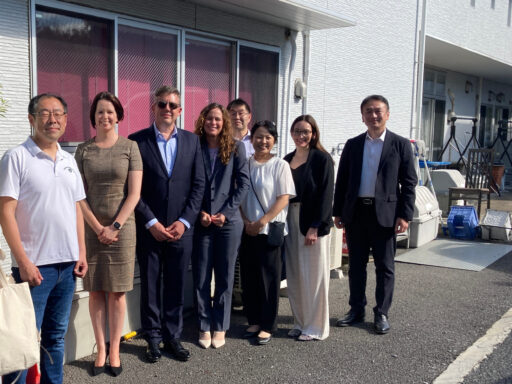World Alzheimer Report 2020
Culture and costs
Kirsty Bennett begins the consideration of the need to understand cultural context in Designing for culture and context where she describes the long, and active, process of listening to those who carry the culture. In this case the indigenous Australians living in the Tjilpiku Pampaku Ngura (TPN). She explains, with great practicality, that the designers of the aged care home that was built on these lands had to ask themselves:
‘Who can we talk to? ‘Do we understand what we are hearing?’
‘Do we understand what we are seeing?’
‘Are people saying what they want us to hear, or what they really think? Or what they are able to tell us?’
These are not trivial questions. They require the designer to find a calmness that allows them to open up to the context they have been asked to work in. They also require the person, or agency, that has asked them to work there to afford them the opportunity and resources to listen.
Kirsty Bennett’s description of the effort required to bring the TPN project to a successful conclusion provides a useful yardstick for measuring the size of the challenges posed by Ishtar Govia and her co-authors– Dementia, design and development: approaches and recommendations from STRiDE countries. STRiDE(Strengthening Responses to Dementia in Developing Countries) is a multi-country, multidisciplinary research project which aims to improve the lives of persons living with dementia and their loved ones through effective, affordable, appropriate and equitable care. This chapter brings the experience of the STRiDE Research Engagement and Impact Leads from Brazil, India, Indonesia, Jamaica, Kenya, Mexico and South Africa to bear on the fundamental question of how much of the knowledge base that has been generated in high income countries can be applied in low and middle-income countries.
The authors used the principles as a framework for addressing this question and found them useful but before applying them to the question they were obliged to describe the differences between the health and aged care structures in high income countries (HICs) and low and middle-income countries (LMICs). It is well known that there are great differences in the extent to which the services taken for granted in HICs are available in LMICs but this common sense should not lead to the conclusion that LMICs wish to copy the structures found in HICs. The relevance of residential care facilities, for example, is wide open to question. As much of the designing for people living with dementia knowledge is based on research in residential care it is immediately apparent that we should be very cautious about our enthusiasm to spread the HICs ideas of good practice to the LMICs. While they may well be applicable to the design of facilities for the well off in LMICs careful consideration, based on research and evaluation, is required before we rush into spreading the good word. Kirsty Bennett’s questions are well worth keeping in mind in this context and,
if we are serious about supporting people living with dementia in LMICs the effort must be put in to find that calm place where systematic reflection can take place on what is ready to be shared and what needs to be developed within the unique cultural contexts in the LMICs.
As it is, the STRiDE authors describe a situation where “environmental design for dementia has not been explicitly applied to the extent to which it has in HICs. Spatial and environmental considerations are understood to be important particularly related to safety and wandering. However, among the vast majority of the population, there is considerably less focus on aesthetics, architectural and environmental design specific to dementia care. Instead, common sense contextual design takes precedent. Facilities and families do what they can with the resources they have available in the spaces in which they are based.”
They go on to observe that embedded in discussions about design for dementia are assumptions about choice.
“Yet, ‘choice’ is related to power. Power is related to resources. And low resourced contexts are often constrained in the choices available.”
Which sets the scene for the next chapter where Tiffany Easton and Julie Ratcliffe discuss The health economics of the built environment for people living with dementia. This is a practical chapter explaining ways in which economic evaluations are relevant to designing for people living with dementia and illustrating how they have been applied in four case studies. While it is fair to say that the economic analysis of the impact of designing for people living with dementia is at an early stage of its application, the tools are available and the results so far lend support to those who claim that
good design is no more expensive than bad design and there are substantial operational and quality of life benefits to be gained from it.
This is reassuring to those of us who have been promoting good design for many years but, more importantly, it is a message that should be shared with LMICs so that they are assisted to allocate scarce resources for the benefit of people living with dementia.
Survey and case studies
The extent to which designing specifically for people living with dementia is taking place around the world has not, to this point, been explored. The writing of this report provided an opportunity to begin this exploration and resulted in 84 case studies from 27 countries being identified. These case studies are provided in full in Volume 2. This chapter – Case studies: survey and overview – describes the ways in which the case studies were collected and overviews the findings from the survey.
The survey shows that there is a vibrant interest in designing for people living with dementia across the world. Unfortunately, it took place during a time when the great majority of aged care providers were very pre-occupied with surviving the COVID-19 pandemic. This had an obvious impact on the number of responses to the survey. Those people who made the time to respond deserve particular thanks and acknowledgement for their contributions.
The responses to the survey indicate that most examples of designing specifically for people living with dementia are to be found in residential care. Which is not surprising. However, day care centres were also very well represented and there were five, very interesting, examples of public buildings or spaces being designed with people with dementia in mind. There was only one completed response from a hospital unit.
The numbers of case studies in these categories and average age of the buildings in the categories suggest that the lessons originally learned in residential care are slowly making their way into the design day care centres, public buildings and hospitals. While no claim can be made for the representativeness of the sample, the fact that only one hospital responded almost certainly reflects the need for an acceleration of efforts to design well for people living with dementia who require hospital care.
The survey also shows that when the principles are used as the framework for collecting information interesting comparisons can be made between categories of building and between findings from research and their application in practice. It suggests that the principles are a useful tool for ordering discussions that might otherwise be difficult to focus.













